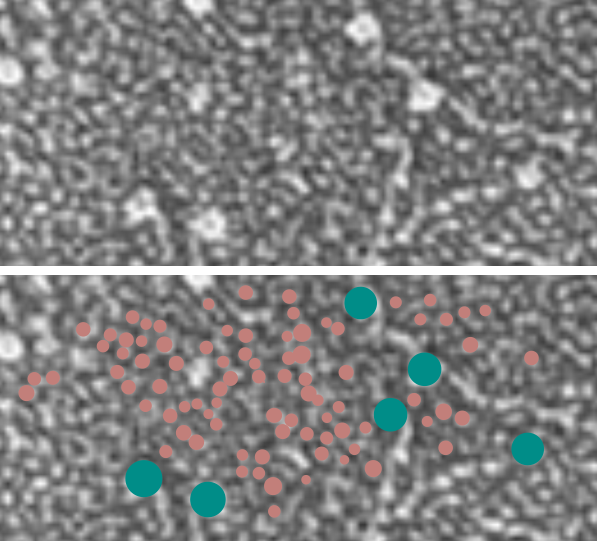Figuring out whether the shadow cast procedure for TEM obscures details in SP-D dodecamers (and other multimers) has been measured as LUT tables, and in yesterdays post it comes out to about 4.5nm. It occurred to me that easily measured grain size is to use a diameter of randomly selected grains. Picture below if one oft used in this analysis published by Crouch et al. The blue dots cover the CRD in SP-D, the salmon colored dots cover grains from the background. Using SP-D shadowed arms measured as hexamers (from one CRD to the other CRD — in a line (vector, with nodes, separated rotated to horizontal, then added together=135nm) then several arms taken for the mean, and normalized to 135nm, these grains are — relative to that number — almost identical to that measured using LUT tables.
It is n=94, 4.23nm diameter +/- 0.6nm (SD). The diameters would be smaller using this method (as observed) owing to the fact that there is a sharp line of demarcation in the circle overlying each grain, while in the LUT tables, the valleys are used (and there is a gradual extinction in the gray values around the edges of the grains in that type of measure thus increasing the width recorded).. the diameters are a quick and easy method, the LUT plots take time. Blue circles overlay CRD which measured in widest diameter come out to about 12.5nm in this micrograph (a dodecamer (two arms of the dodecamer measured) from this same micrograph but a different location showed using LUT plots a diameter of the CRD of about 13.5nm — so this is close for a very small sample.